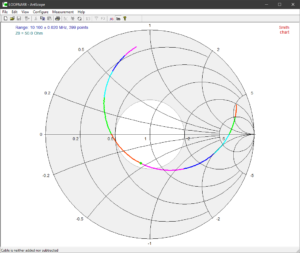The articles Antennas – disturbing the thing being measured – open wire lines #3 Antennas – disturbing the thing being measured – open wire lines #4 demonstrated an inconsistency between a partial linear circuit model and a complete NEC model for predicting common mode current behaviour.
One of the oft proposed solutions to characterising a balun is to find the Common Mode Rejection Ratio (a term carried over from other applications, eg voltage driven operational amplifiers). (Anaren 2005) explains a method of finding balun CMRR. (Skelton 2010) goes so far as to say
The Common Mode Rejection Ratio (CMRR) of a balun is defined in professional literature as the ratio of wanted to un-wanted transmitted power. As rejection of common-mode transmission is the primary purpose of a balun, it follows that CMRR should be the key figure of merit.
Let us take the model scenario used in Antennas – disturbing the thing being measured – open wire lines #4 and lower the height of the dipole 10 10m, and compare the model ratio of Ic/Id.
Again, we will use Python to do the complex maths for the without and with scenarios at 20m height, and without and with at 10m height. Continue reading Antennas – disturbing the thing being measured – open wire lines #5





